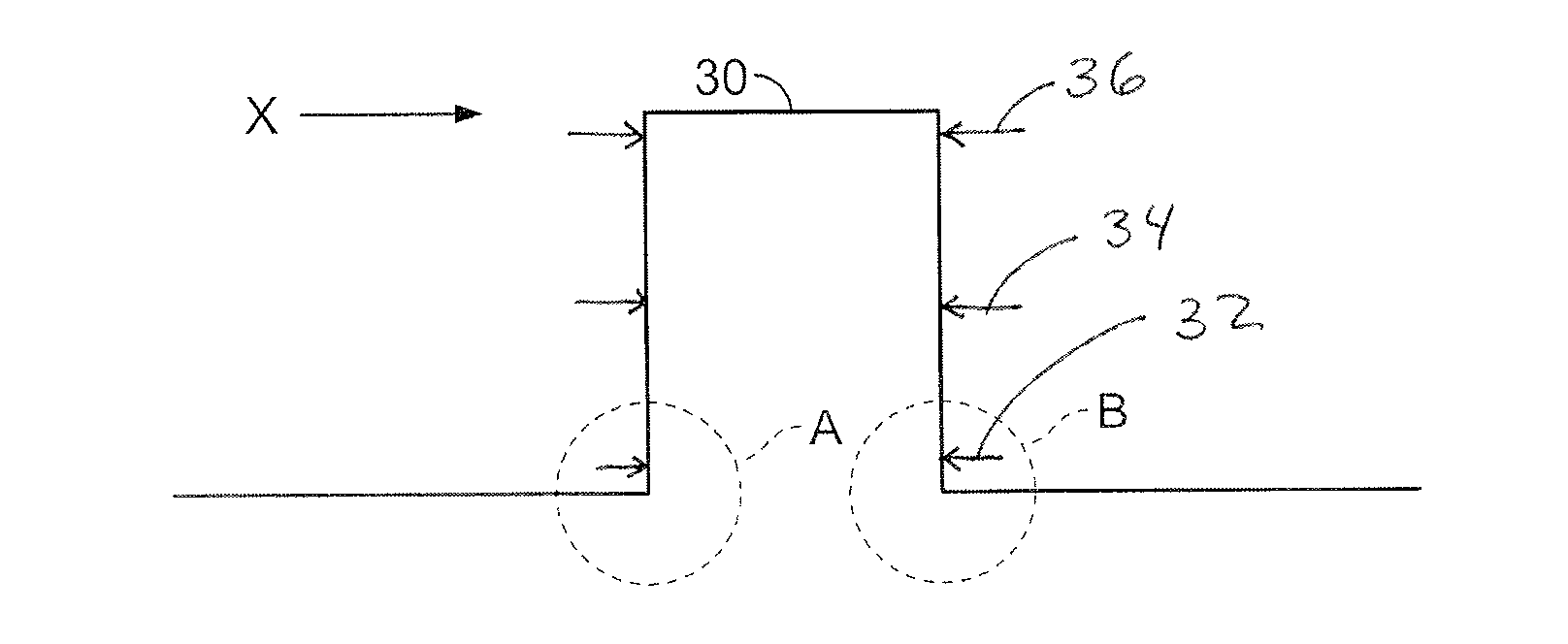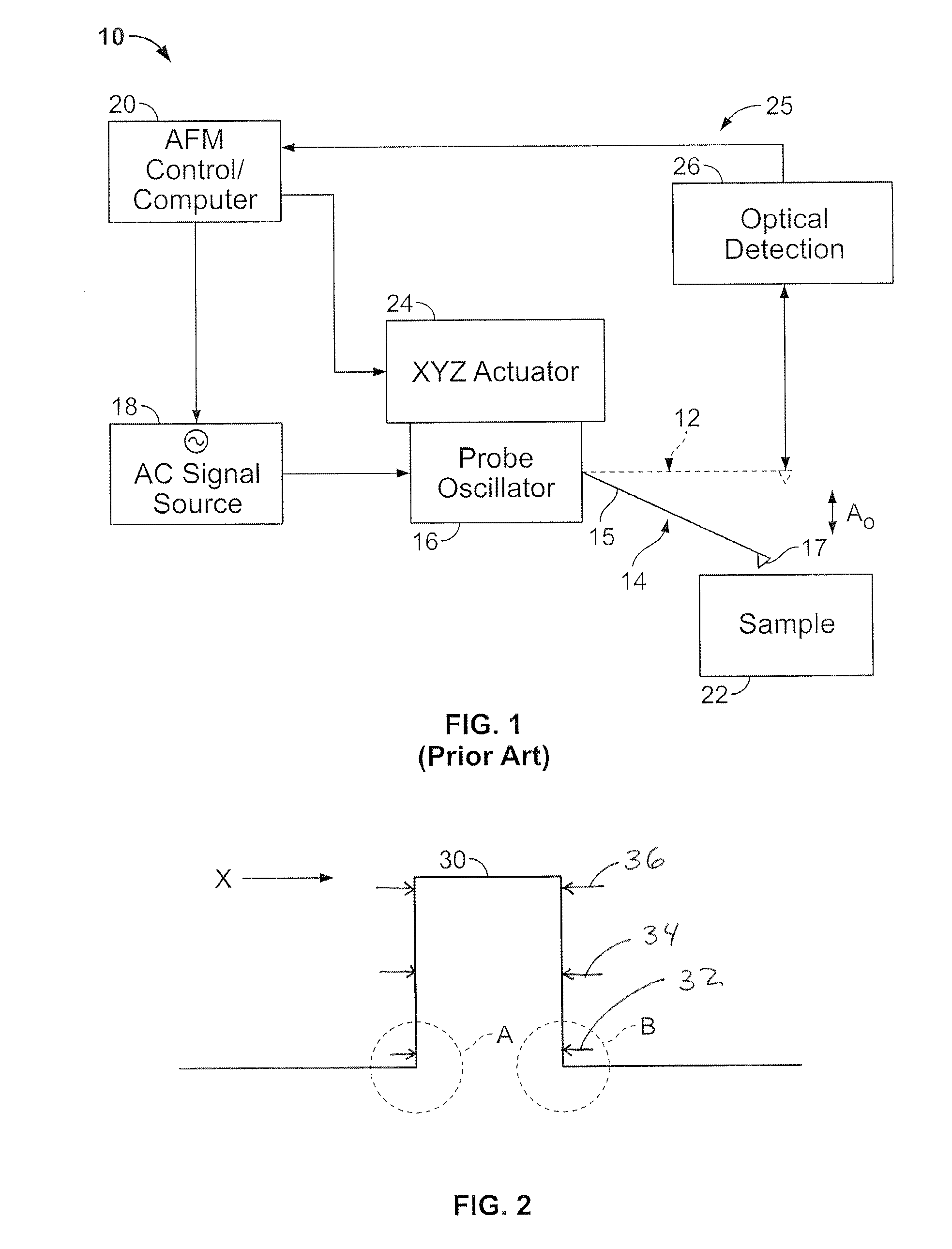Method and apparatus of scanning a sample using a scanning probe microscope
a scanning probe and sample technology, applied in the direction of mechanical roughness/irregularity measurement, instruments, semiconductor/solid-state device testing/measurement, etc., can solve the problems of poor tracking of the flat-to-sidewall transition, difficult to obtain information regarding the transition region with standard cd mode afm, and difficulty in obtaining reliable data. , to achieve the effect of accurate tracking and high scan velocity
- Summary
- Abstract
- Description
- Claims
- Application Information
AI Technical Summary
Benefits of technology
Problems solved by technology
Method used
Image
Examples
Embodiment Construction
[0058]The preferred embodiments are directed to a method and corresponding apparatus for high speed imaging sample features, particularly those characterized by transition regions, such as that encountered when imaging a flat-to-sidewall region of a feature of a semiconductor sample. By detecting the flat-to-sidewall transition, and confirming the same, the sample in that region is then re-scanned to accurately measure the transition, including the entire base of the region. The method may operate in conjunction with a control method associated with operating an atomic force microscope in the above-described CD mode or a similar mode. Notably, the method operates independent of the specific dynamics of the scanner by re-scanning regions of the sample that typically would cause missing or biased data, i.e., notching, when imaging the sample using standard CD mode.
[0059]Turning initially to FIGS. 5A-5D, high speed operation of an AFM according to a preferred embodiment of the present ...
PUM
 Login to View More
Login to View More Abstract
Description
Claims
Application Information
 Login to View More
Login to View More - R&D
- Intellectual Property
- Life Sciences
- Materials
- Tech Scout
- Unparalleled Data Quality
- Higher Quality Content
- 60% Fewer Hallucinations
Browse by: Latest US Patents, China's latest patents, Technical Efficacy Thesaurus, Application Domain, Technology Topic, Popular Technical Reports.
© 2025 PatSnap. All rights reserved.Legal|Privacy policy|Modern Slavery Act Transparency Statement|Sitemap|About US| Contact US: help@patsnap.com



